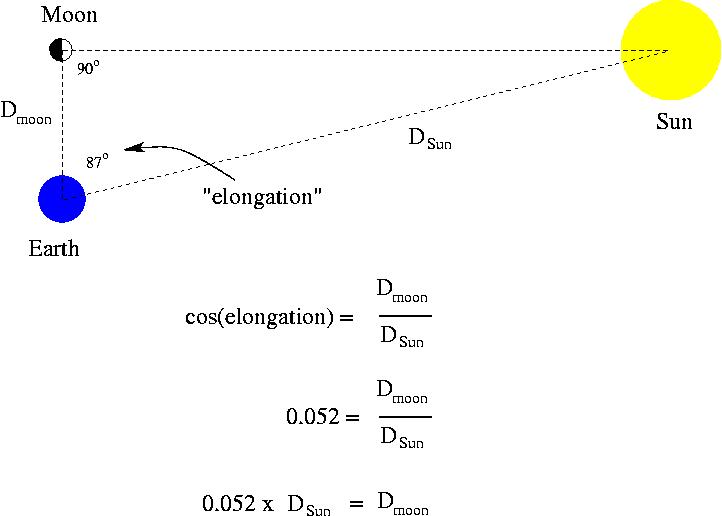In Class:
Question to Ponder
Modern spacecraft routinely achieve speeds of 10 miles per second (or
about 15000 meters/sec). If we were to fly a rocket from Earth toward
the Sun, about how long would it take for the rocket to travel the 1.5
x 1011 meters to reach the Sun?
- a) three days.
- b) two weeks.
- c) four months.
- d) five years.
Modellers of the Universe Didn't Care Much About Scale
- Thought to be unimportant for Workings of the Universe
- Planets were separated by just enough room so that they didn't bump
into each other.
- People who cared were the more practical sort -- mapmakers,
navigators -- and they cared mostly about the size of the Earth.
Eratosthenes Measures the Size of the Earth
- For details on his method, see the special web page on
Eratosthenes (you should have read this by now).
- His method relied on the fact that the Sun was far away.
- Without that assumption, he couldn't conclude that the sunlight
at Syene and at Alexandria were parallel.
How Far is the Sun?
- Aristarchus used a different method to measure the distance to the Sun.
- He found a right triangle in the sky:
He realized that when the Moon appears "half full" (called "at First
Quarter" by astronomers), the angle between the direction from the
Earth to the Moon and the direction from the Moon to the Sun is 90
degrees.

- He then measured the "elongation" of the Moon (i.e., the angle
between the direction from the Earth to the Moon and the direction
from the Earth to the Sun), and from that could calculate the ratio of
the distance to the Moon to the distance to the Sun (see above calcualtions).
- He found that the Sun was 20 times more distant than the Moon.
- He has the distance to the Moon from his study of lunar eclipses
(see the web page on this
topic).
- He finds the Moon to be 30 Earth diameters away.
- So he finds that the Sun is 30 x 20 = 600 Earth diameters away.
- The modern result is 20 times larger still, so the Sun is really
12,000 Earth diameters away.
- This is plenty far enough away for Eratosthenes to assume that
light from the Sun comes from the same direction at every location on
the Earth.
Aristarchus as a Natural Philosopher
- Like Hipparchus, Aristarchus was a bit of a crossover dude,
interested in both the practical and theorectical aspects of
astronomy.
- He used his measurement of the distance to the Sun to show that
the Sun was much bigger than the Earth.
- He therefore concluded that the Sun should be at the center of
the universe -- the first heliocentric model.
|
![]()
